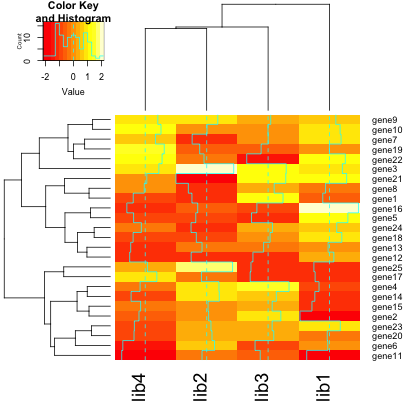
Have no fear, the screenshots are here! (For the original tutorial, click here)
Part 1-Getting the Package onto Your Computer
- Open R via your preferred method (icon on desktop, Start Menu, dock, etc.)
- Click “Packages” in the top menu then click “Install package(s)”.
- Choose a mirror that is closest to your geographical location.
- Now you get to choose which packages you want to install. If you would like to install multiple packages, click on each one while holding the CTRL key or the cloverleaf-looking key. For now just highlight “ggplot2″.
- You will know when the package has been downloaded onto your computer when another greater-than symbol (“>”) appears.
Gplots Bioconductor
Part 2-Loading the Package into R
- Type “library(ggplot2)” and then press the Enter/Return key.
- All done.
Plots Bioconductor
You will only need to do Part 1 once time on your computer. From now on, you only need to do Part 2 each time you close and restart R.
Use this method once you get more acquainted with the whole copy and paste business. It is much quicker than Method 1.
The goal of condadeps is to generate a conda environment file as a result of the dependencies found in a repository. At the moment, it only translates Python and R dependencies but it would be great to have it working for other programming languages as well. Bioconductor Resources. An Introduction to R and Bioconductor. Includes information about installation and getting help. Basic Introduction to R and Bioconductor; Bioconductor Courses; An excellent starter to Affymetrix data analysis Jean Wu’s excellent lab on Affymetrix data analysis; Guide to importing GEO soft data files into bioconductor. This package implements methods to analyze and visualize expression data. It supports normalized input as e.g. From Cufflinks or expression chip arrays and raw count data from bam file input.
Part 1-Getting the Package onto Your Computer
- Type “install.packages(“gplots”)” and then press the Enter/Return key.
- If you have already loaded a package from a server in the R session, then R will automatically install the package. If not, R will automatically prompt you to choose a mirror. Again, choose one close to unless you want to watch a loading bar slowly inch its way to fulfillment.

Part 2-Loading the Package into R
- Type “library(gplots)” and then press the Enter/Return key.
- All done. R will spit out a lot more output because it needs to install other packages required for gplots.
Again, you will only need to do Part 1 one time on your computer. From now on, you only need to do Part 2 each time you close and restart R.
Related
